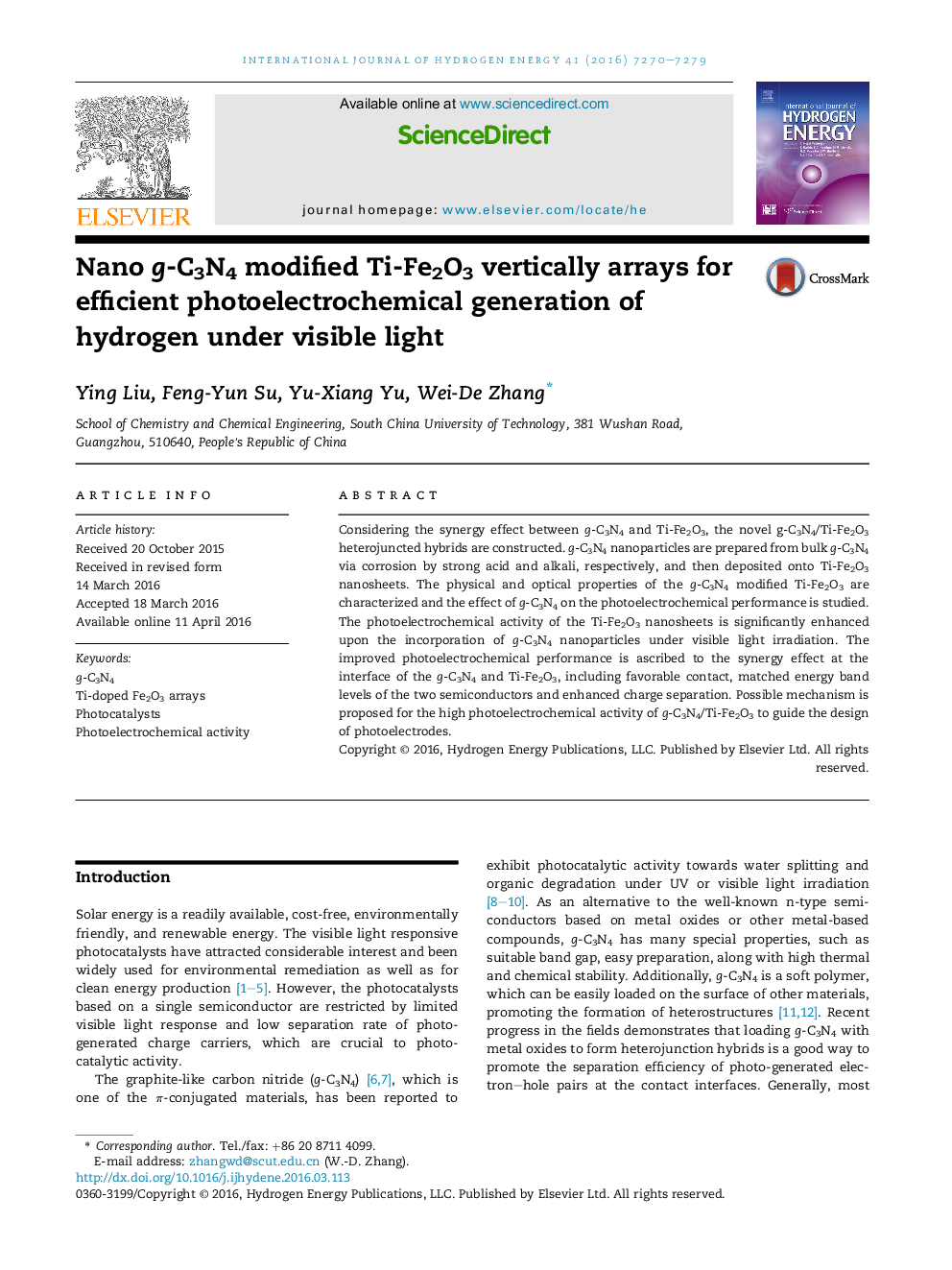| Article ID | Journal | Published Year | Pages | File Type |
|---|---|---|---|---|
| 1268680 | International Journal of Hydrogen Energy | 2016 | 10 Pages |
•Vertically aligned Ti-Fe2O3 nanosheets were grown on FTO by hydrothermal synthesis.•The Ti-Fe2O3 nanosheets were modified by nano g-C3N4.•g-C3N4/Ti-Fe2O3 heterojunction was constructed.•The photocurrent of the g-C3N4/Ti-Fe2O3 is 50 times as that of the Ti-Fe2O3.•Effectively separation of photogenerated electron–hole pairs.
Considering the synergy effect between g-C3N4 and Ti-Fe2O3, the novel g-C3N4/Ti-Fe2O3 heterojuncted hybrids are constructed. g-C3N4 nanoparticles are prepared from bulk g-C3N4 via corrosion by strong acid and alkali, respectively, and then deposited onto Ti-Fe2O3 nanosheets. The physical and optical properties of the g-C3N4 modified Ti-Fe2O3 are characterized and the effect of g-C3N4 on the photoelectrochemical performance is studied. The photoelectrochemical activity of the Ti-Fe2O3 nanosheets is significantly enhanced upon the incorporation of g-C3N4 nanoparticles under visible light irradiation. The improved photoelectrochemical performance is ascribed to the synergy effect at the interface of the g-C3N4 and Ti-Fe2O3, including favorable contact, matched energy band levels of the two semiconductors and enhanced charge separation. Possible mechanism is proposed for the high photoelectrochemical activity of g-C3N4/Ti-Fe2O3 to guide the design of photoelectrodes.
Graphical abstractNano g-C3N4 modified Ti-Fe2O3 nanosheet arrays with high and stable photoelectrochemical activity under visible light were successfully constructed. The heterostructured photoanode, g-C3N4 modified Ti-Fe2O3 nanosheet shows high photoelectrocatalytic activity toward water splitting.Figure optionsDownload full-size imageDownload as PowerPoint slide
